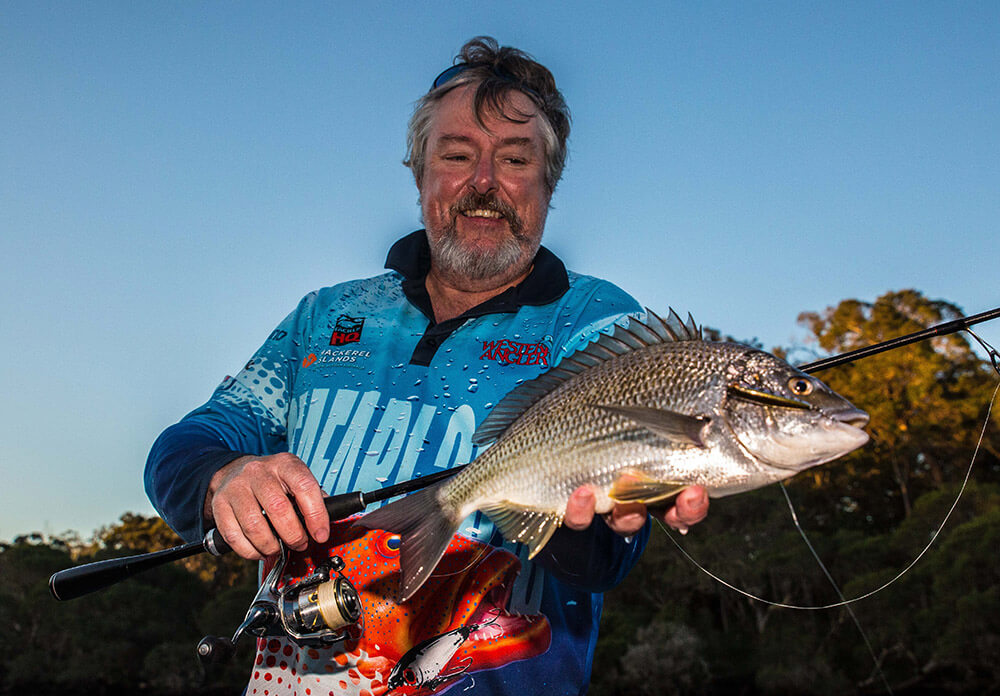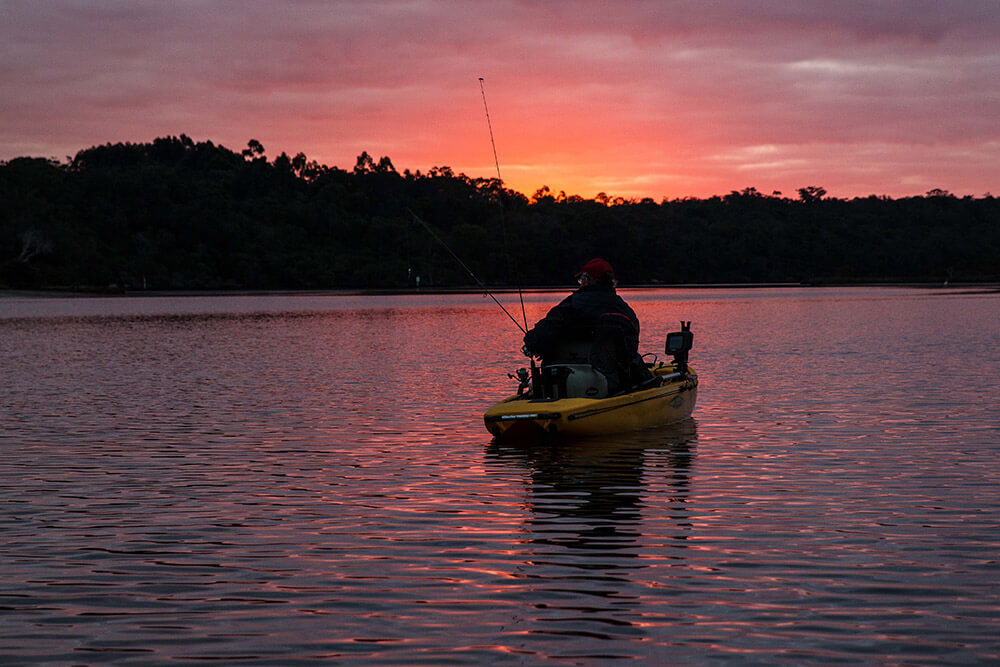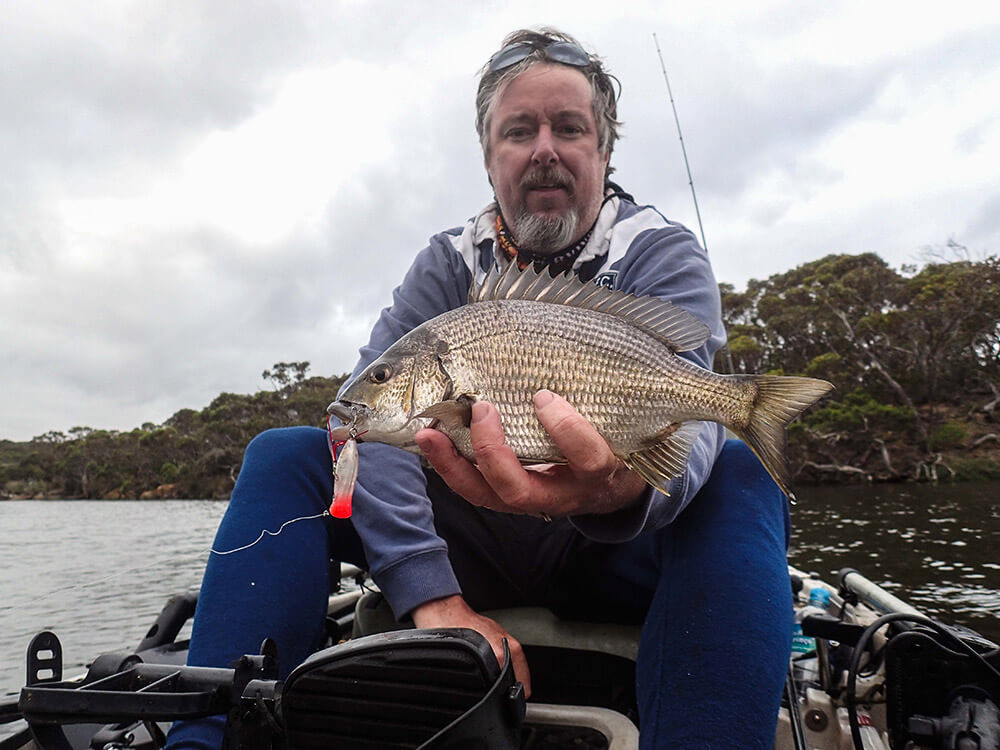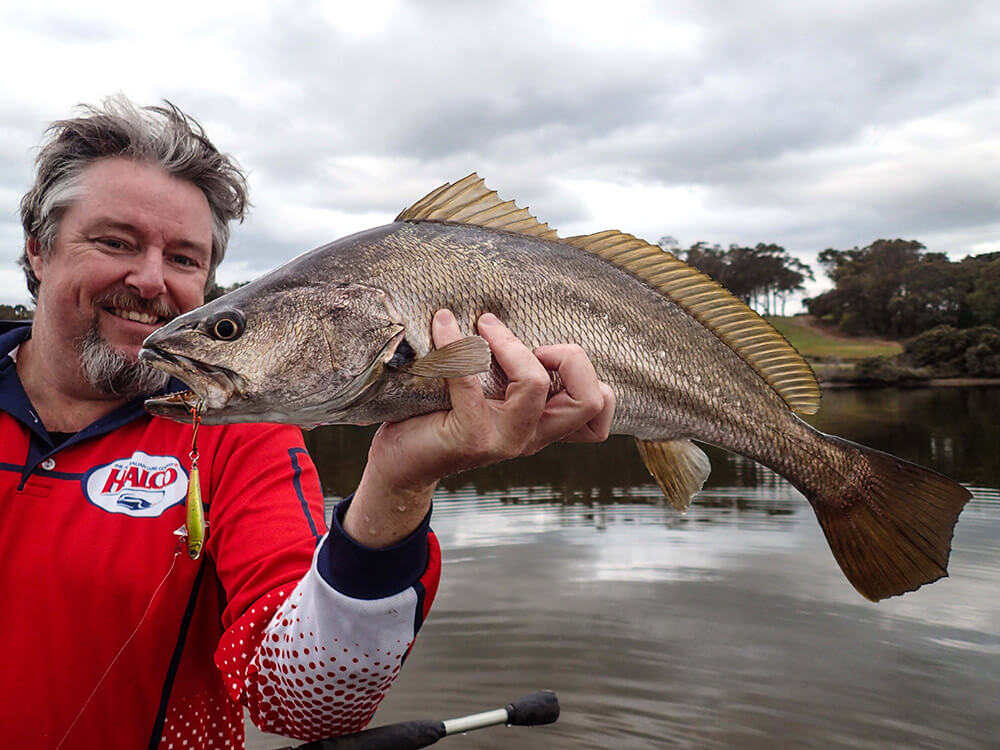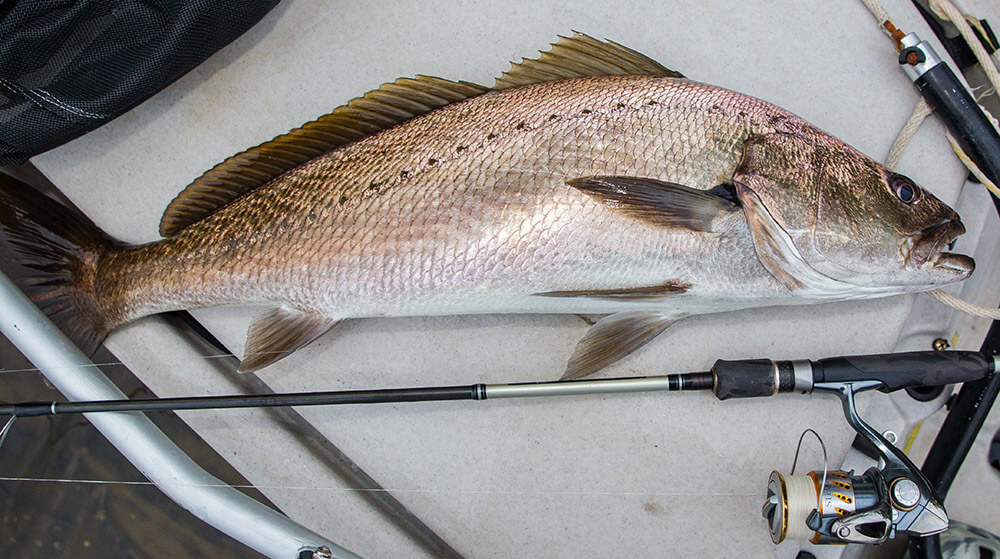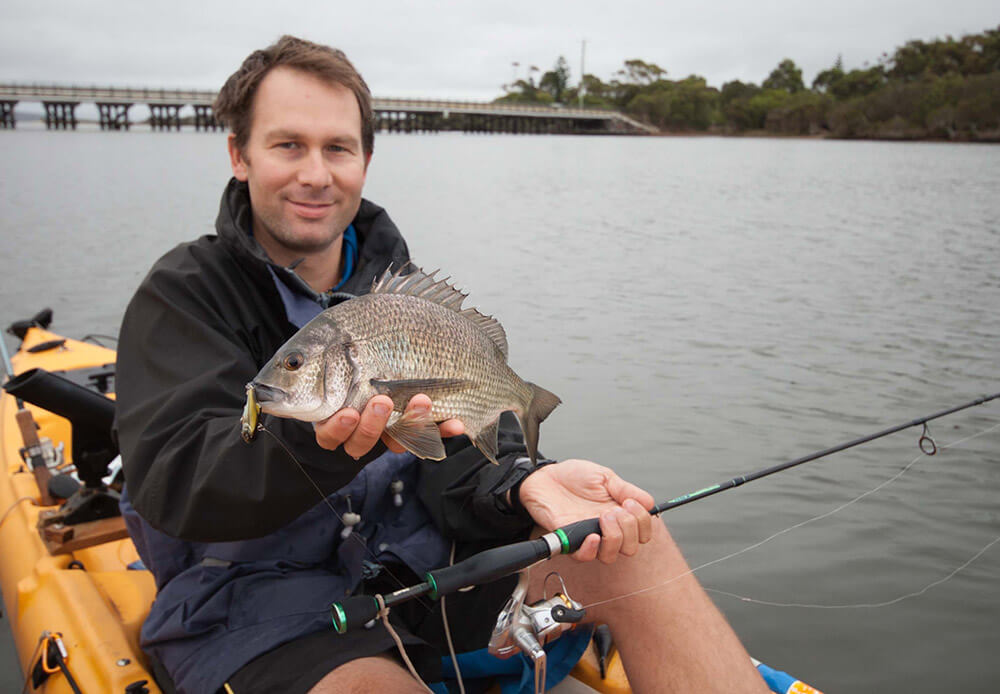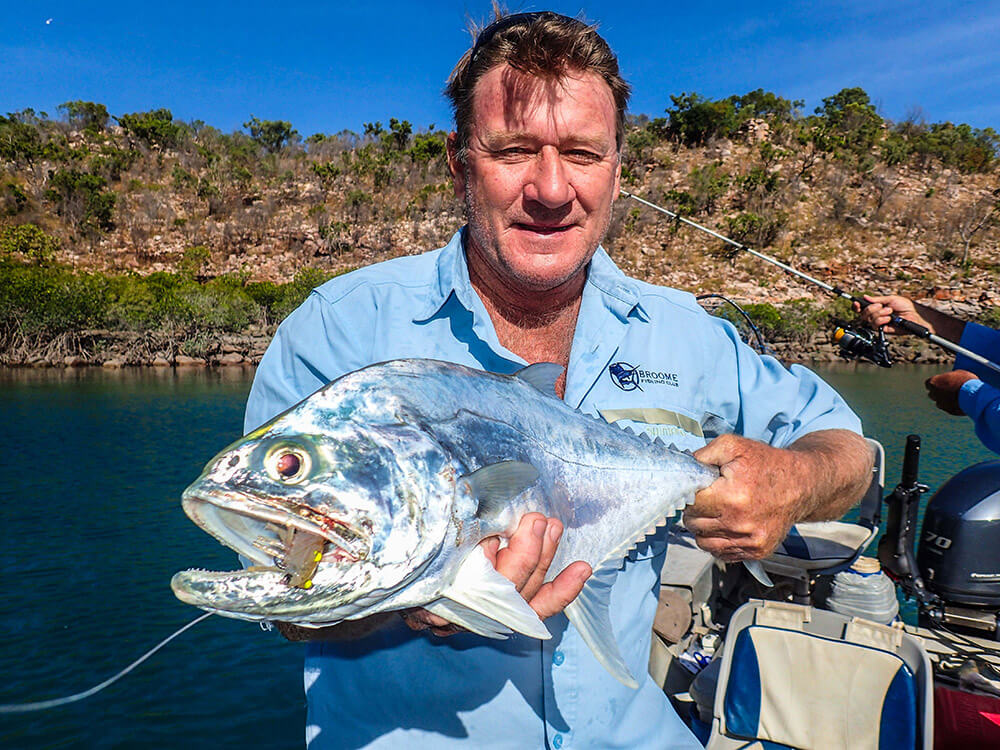The south coast is a delightful part of the world, especially at this time of year.
Autumn truly is the time to enjoy everything it has to offer, with the best weather of the year featuring still, warm day days and clear skies that showcase just how stunning this coastline is.
When it all comes together on the south coast there truly is nowhere else like it on the planet, and that’s probably why I choose to live there!
One of the great features of the south coast is the fishing, which is an integral part of the lifestyle in this part of the world, for both locals and visitors.
Indeed, many south coast towns started as fishing communities and recreational fishing remains a lifeblood for them, with huge social and economic benefits.
There’s an absolute wealth of fishing options along the south coast – if you truly want to get away from it all, and you’ve got a 4WD, there’s nothing like camping and fishing along the Nullarbor and Baxter Cliffs. For boaties, fishing around the archipelago islands around Esperance can be sensational at times when the conditions allow and then closer to town 4WD-ing and fishing off the beaches around Hopetoun and Bremer Bay can produce classic south coast action for species like salmon, skippy, mulloway and sharks.
Autumn is prime time for south coast anglers, with the favourable weather and giant salmon schools passing through on their annual migration, and southern bluefin tuna and bonito not far behind. The conditions are at their best for offshore fishing for species including pink, red and queen snapper, dhufish, Samson fish and yellowtail kingfish.
And it’s also a great time of the year to fish the countless south coast estuaries and rivers for thumping black bream, juvenile salmon, herring, King George whiting, pink snapper and blue swimmer crabs, not to mention the odd surprise like mulloway and tailor. For anyone considering a south coast escapade, here is a list of half a dozen places to start.
Duke of Orleans Bay
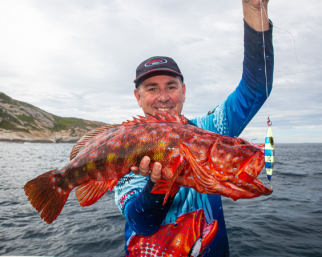
Located east of Esperance, a great access point to the beautiful coastline in this area. There are plenty of campsites through Cape Arid, but the caravan park at Duke of Orleans makes a perfect base for a fishing trip.
There is good inshore fishing for small boat anglers after a relatively easy beach launch at the Duke. With vast seagrass meadows you won’t need to go far for a feed of squid. Head out a short distance into the Recherche Archipelago and try for red snapper, harlequin fish, Samson fish, pink snapper and yellowtail kingfish, to name but a few species found here. There are numerous easily accessible beaches either side of the Duke which offer superb surf fishing for a range of species including salmon, mulloway, herring and skippy.
The salmon come through in huge numbers in late summer/early autumn and spots like Alexander Bay, Kennedy and Tagon Beaches, Poison Creek and Thomas River can all fire, offering superb beach driving experiences as well. Some of the biggest skippy in WA are caught around here. The drive along the beach from Thomas River to Cape Arid is a must-do if in the area, with that amazing contrast of crisp white sand and sparkling blue water.
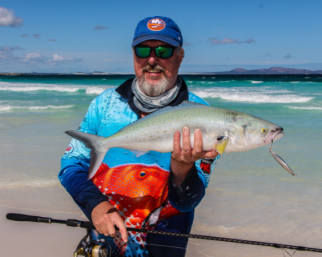
Hopetoun
An old favourite of mine, offering beach, estuary and offshore fishing around this lovely little holiday town. ‘Hopey’ as we call it, used to have a long jetty too that was great for fishing. Nowadays a rock groyne offers a couple of small jetties and a boat ramp, for easy access to inshore and offshore fishing for the usual range of inshore species.
The beaches east of Hopetoun are quite stunning and offer some superb fishing opportunities, with numerous reef ledges especially towards 12-Mile. A gravel road follows the coast east and offers opportunities for those with 2WD vehicles to park close to spots, while beach access for 4WDs is available in some locations. There are good spots all through here as you head towards Masons Bay and Starvation Bay. There are well-established campsites with good facilities here and beach launching for those with a boat who want to access some great fishing directly out from Masons and ‘Starvos’.
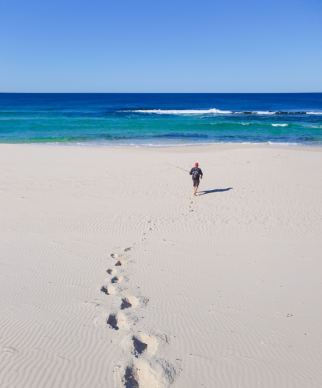
Back on the shore at this time of year, you should be able to find plenty of salmon, along with herring and skippy. The estuary fishing around Hopetoun can be great too, and over the years I’ve had a lot of fun in the Jerdacuttup River on black bream. Last year I fished it from a kayak for the first time and had a ball. Another great spot to check out west of town is Quoin Head. There is plenty of holiday accommodation in Hopetoun, including caravan parks.
Beaches of Bremer Bay
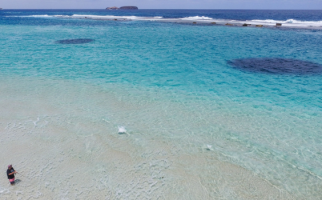
A wild and magnificent destination, Bremer Bay and the beaches to the east and west have to be seen to be believed. To the east of town, Trigelow, Doubtful Islands, Peppermint Beach and Bremer Beach to name a few, while to the west of town, Dylan, Fosters and Reef Beach are all collectively jaw-dropping land-based fishing spots. There are a range of beaches facing south, west and east, meaning you can pick your spot with ease to always have the wind in your back for casting.
With so much space, finding a camping spot all to yourself is simple to keep families entertained. A majority of these beaches are strictly 4WD only and big schools of salmon hold up in numerous sheltered areas at times, which can make for exciting sight fishing. There are plenty of areas where you can explore via 4WD through here to find deep gutters to soak baits or flick out lures for a wide range of great species.
They’re also usually good areas if the kids want a swim or to use their boogie boards. Herring are prolific along the beaches both west and east of Bremer and there’s a chance of skippy and silver bream. Sharks are often shadowing the salmon and can offer another challenge.
Nanarup
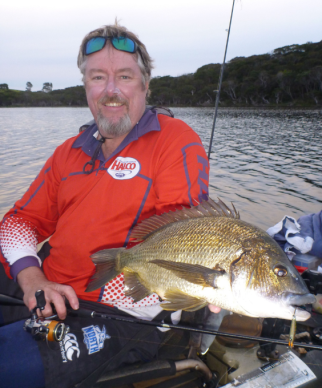
Located just east of Albany and only a 20-minute drive from the town centre, this spot is an old favourite of mine, and a great family fishing destination for anyone in the Albany area, offering fantastic fun fishing opportunities for anglers of all ages.
I have been fishing the inlet, which is east of Albany at Nanarup Beach, since I was a little kid, and I still get a real kick out of it. It is full of usually smallish bream, and some chunky juvenile salmon, making for great light tackle fishing. There are big bream in there though and these are a real reward for persistence. The bream will happily take baits, but it’s a good spot to try your hand at lure fishing for them, especially in the warmer months. You can simply pull up a car next to the water and cast a line, or wade, or even fish from a kayak or small boat.
The beach itself can be a great surf fishing spot, and is noted for producing salmon during the run, and often all year. It has some great holes and herring and tailor are also caught here. With a 4WD you can drive along the beach, or you can park and walk. There is also a delightful little bay at the western end, which is perfect for swimming.
Wilson Inlet
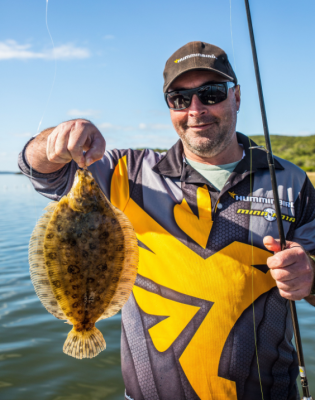
This is an amazing fishery located in Denmark. It’s a reasonably small and shallow inlet, generally with a flat, featureless bottom, but it has an amazing ability to hold quality fish that just highlights how productive these southern estuaries can be.
The range of species that show up in the Wilson is quite staggering, especially given it can be closed to the ocean for extended periods. Big blue-spot flathead are a Wilson staple, as are some thumping dinner-plate flounder. King George whiting can be caught in there, yellowfin whiting show up in summer and the Wilson is renowned for its pink snapper. The pinkies are sometimes in huge numbers and while most are smallish, fish to 75cm do get caught.
Large silver bream can be caught in the Wilson and it holds probably the biggest, fattest herring you’ll ever see. Many times, I’ve thought I’ve hooked a small salmon, also found in the Wilson, only for it to turn out to be a monster herring. At times schools of big salmon have become trapped in the estuary and it also produces some nice garfish. There were even some jumbo tailor netted in there by professionals a couple of years ago.
The two main rivers running into it, the Denmark and Hay, can produce some quality bream. A small boat or kayak opens up the Wilson opportunities, but there are also shore fishing opportunities near the mouth and around the edges of the inlet. There are numerous accommodation options around Denmark.
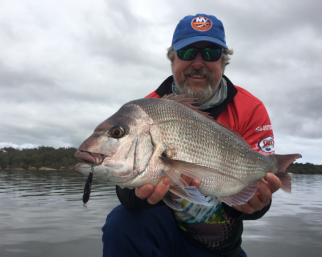
Donnelly River
It has been years since I have been to the Donnelly, but I’d love to get back there at some time.
Access to the river is via a boat ramp that offers access to the lower reaches down to the mouth for small trailer boats. This is a fascinating spot to me, as it is one place where you can get trout all the way to the ocean, and it also produces redfin perch near the ramp. The first time we visited we paddled to the mouth in a heavily laden Canadian canoe and caught some trout on the way down, along with plenty of black bream at the mouth. We also caught juvenile salmon. I’ll never forget having one huge trout follow my lure that was probably the biggest I’d ever seen in WA.
There are shacks near the mouth, and we simply set up a tent near one of them. The beach fishing at the mouth can be good, producing herring, skippy and tailor. I’ve even heard of trout being caught from the beach. During the annual salmon run you will catch plenty of them as well. With no vehicle access, this is a special spot to get away from it all, whether for a day trip or a camping adventure.
